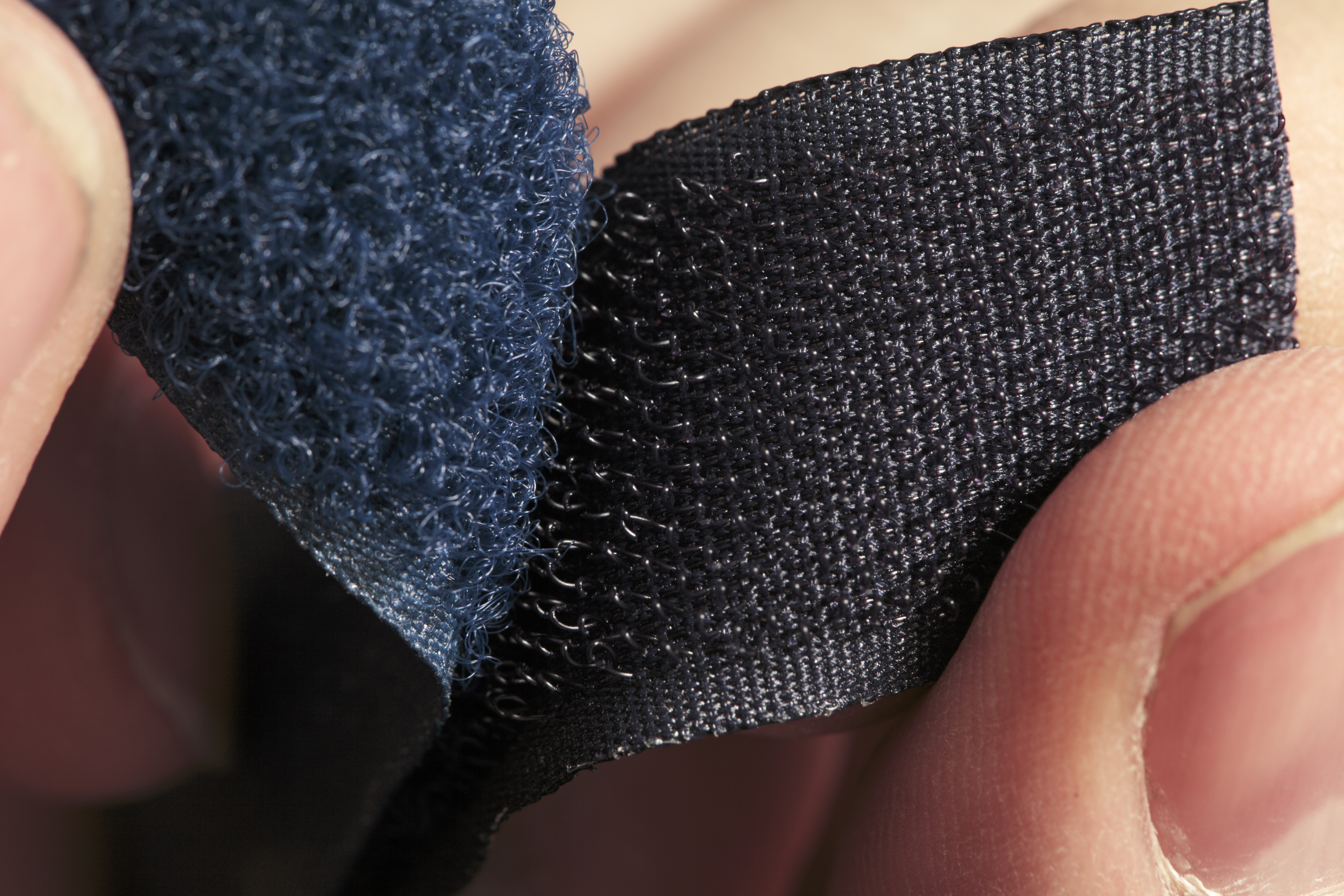Who Invented Velcro?

Velcro, the “zipperless zipper,” exists on a variety of products from children’s shoes to laptop bags to blood pressure gauges to airplane flotation devices. While the term is used synonymously to describe the hook-and-loop style of binding, it’s actually the name of the company that produced the technology from which now many thousands of imitators trace their products’ origins.
Inspired by nature
In 1948, Swiss engineer and amateur mountaineer George de Mestral went hiking in the woods with his dog. Upon arriving back at his home, he took note of the burrs that clung to his clothes and he wondered if such an idea could be useful in commercial application. He studied a burr under a microscope only to discover that they were covered in tiny hooks, which allowed them to grab onto clothes and fur that brushed in passing. After more than eight years of research and work, he created what is known now today as Velcro, a combination of the words “velvet” and “crochet.” Made up of two strips of fabric, one covered in thousands of tiny hooks and the other with thousands of tiny loops, the materials gripped together firmly while still allowing easy release.
While de Mestral’s invention became the source of much ridicule early in its inception, his perseverance allowed him to perfect the hook-and-loop technology for commercial use. By patenting Velcro in 1955, he helped give his company a competitive edge over other would-be imitators, as evidenced by his company reaching the point selling more than 60 million yards of Velcro per year during de Mestral’s lifetime.
NASA and Velcro
Many sources attribute the creation of Velcro to NASA, thought this claim proves quite false. While NASA wasn’t responsible for the material’s inception, the space agency's use of the product did lead to Velcro’s popularity in all circles of life. In the 1960s, Apollo astronauts used Velcro to secure all manner of devices in space for easy retrieval.
Velcro’s popularity
Despite the image boost created through NASA’s use of Velcro, the material came in few colors and often looked quite ugly. Due to the simple lack of aesthetic appeal, Velcro was used only with athletic equipment. Starting in 1968 and on into the 1980s, shoe companies like Puma, Adidas and Reebok integrated Velcro straps onto children’s shoes.
By this point, the patent on the hook-and-loop technology had expired and many imitators began to crop up throughout the world. Many of these were cheap and low-quality versions, which forced Velcro to begin a lifelong battle of maintaining the integrity of its product’s name to prevent it from becoming a generic term, much like aspirin, which was originally a brand name.
Velcro gained popularity in many new styles of use when, a 1984 interview between David Letterman and Velcro’s USA director of industrial sales ended in Letterman jumping off a trampoline onto a wall while in a Velcro suit. This prompted many companies to find innovative and versatile methods of using Velcro, from attaching electronic devices to car seats to toys with Velcro materials for catching balls.
Velcro in the Army
In 2004, Velcro made significant headway in the industry by gaining the U.S. Army as a client. The hook-and-loop material became used on the Army Combat Uniform, a lighter version of their original battle attire. However, soldiers disliked the material and caused much uproar through complaints over the noise it created and how the fabrics collected dust. After an internal inspection of these claims, the Army moved away from the use of Velcro to instead rely on buttons.
Velcro today is a registered trademark of Velcro Industry. So while many products come equipped with Velcro, they don’t advertise as being a Velcro product, just like imitator manufacturers don’t advertise their hook-and-loop materials as Velcro.
Get the world’s most fascinating discoveries delivered straight to your inbox.
